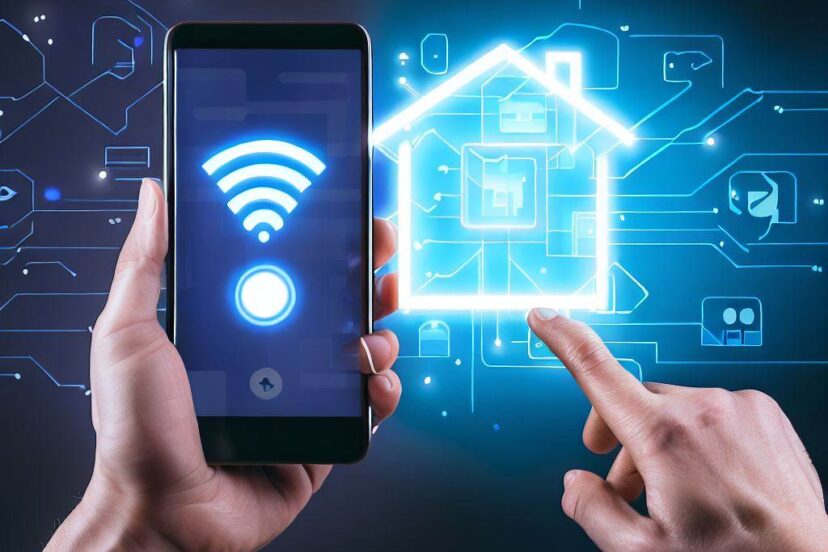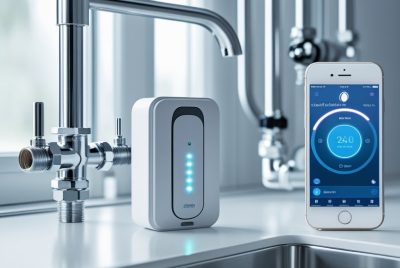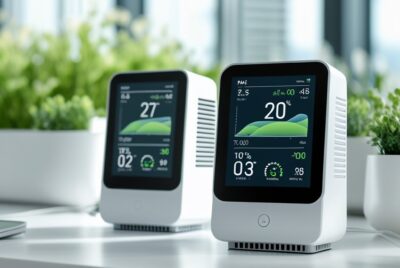Bixby vs Google Assistant: A Smart Home Showdown
*We may earn a commission for purchases made using our links. Please see our disclosure to learn more.
Bixby vs Google Assistant: Comprehensive Voice Assistant Comparison
Let’s jump right in to the Bixby vs Google Assistant Showdown! In exploring the realm of digital voice assistants, the competition between Bixby and Google Assistant emerges as a topic of interest for anyone invested in smart technology. I recognize that individuals who rely on their Android devices for daily tasks, routines, and smart home control are particularly keen on understanding the distinctions and strengths of each assistant. While Bixby, developed by Samsung, offers seamless integration with Samsung devices, Google Assistant boasts a broader reach across Android and Google services. It’s essential to examine how each assistant performs in various scenarios and caters to different user needs.

My analysis takes into account the features, performance, and device compatibility of both Bixby and Google Assistant. It’s clear that the usability of a voice assistant is greatly impacted by the devices and services one utilizes. Google Assistant, for example, shows a strong performance in general knowledge queries and compatibility with third-party hardware—a fact not to be overlooked considering the growing landscape of smart home devices. Meanwhile, Bixby’s strengths lie in its deep integration with Samsung’s own ecosystem, potentially offering a more personalized and refined experience for Samsung device users.
At the core of the comparison is recognizing that while both assistants strive to simplify and enhance user interaction with technology, their approaches and proficiencies differ. The choice between Bixby and Google Assistant may ultimately hinge on the extent of a user’s investment in either the Samsung ecosystem or the wider Android platform. Having acknowledged this, I delve into the specifics of each assistant’s capabilities to lend insight into which may better complement one’s digital lifestyle.
Overview of Bixby and Google Assistant

In exploring Bixby and Google Assistant, I’ll detail the historical roots of these digital assistants, delve into the core features defining their functionalities, and discuss the intricacies of their user interfaces and accessibility.
Historical Development
Bixby was introduced by Samsung in 2017, as an AI-powered digital assistant for smartphones, smart appliances, and other devices. Aimed at enhancing the Samsung ecosystem, Bixby’s development reflects its focus on device integration.
Google Assistant, on the other hand, was launched by Google in 2016. It evolved from Google Now and has expanded across a myriad of devices and platforms. This virtual assistant is ingrained in Android, Google’s ecosystem, and a broader range of third-party gadgets.
Core Functionalities
Bixby:
- Voice Commands: Allows users to perform a variety of tasks on Samsung devices.
- Bixby Routines: Automates actions based on the user’s habits or conditions.
Google Assistant:
- Voice Commands & Queries: Recognizes natural language and provides answers, executes commands.
- Smart Home Control: Adjust settings and control a wide range of compatible smart home devices.
User Interface and Accessibility
Bixby:
- Activated via a dedicated Bixby button on Samsung devices or through voice wake-up.
- Focuses on a seamless interface within the Samsung product ecosystem.
Google Assistant:
- Accessible through a simple “Ok Google” voice command or by long-pressing the home button on Android devices.
- Offers a more interactive UI with a wide range of supported languages, enhancing accessibility on a global scale.
Bixby vs Google Assistant: Compatibility and Integration

In assessing Bixby and Google Assistant, I focus on how they integrate with devices and support various ecosystems to enhance the user experience.
Device Ecosystem of Bixby vs Google Assistant
My research shows that Google Assistant thrives across the Android ecosystem, extending seamless support to Android Devices such as smartphones, Android Auto, and Android TVs. Its performance on Google’s own suite of home devices, like the Google Nest and Home products, demonstrates a commitment to a cohesive ecosystem.
Conversely, Bixby, designed by Samsung, is optimized for integration within Samsung Devices. It’s particularly adept at handling device-specific functions on Samsung smartphones and tablets, which benefits users deeply invested in the Samsung ecosystem.
Smart Home Devices
When it comes to Smart Home Devices, Google Assistant stands out with robust compatibility. It supports a vast array of home automation devices, allowing users to execute voice commands for a smart home setup. Notably, SmartThings—a platform from Samsung—is also certified to work smoothly with Google Assistant, indicating a strong presence in the smart home space.
Bixby’s capabilities, while growing, are currently more limited outside of Samsung’s own product lines. This limitation means it is currently less versatile than Google Assistant for managing a diverse Smart Home setup.
Third-Party App Support
In this aspect, I take note that Google Assistant shows extensive Third-Party App Support, which translates to compatibility with a multitude of services and applications. This broad compatibility is invaluable for users who utilize a variety of apps on a daily basis.
On the other hand, Bixby’s performance with Third-Party Apps is less comprehensive. Though Samsung has been making strides to improve this facet of Bixby, it still lags behind Google Assistant in this arena. However, for users primarily using Samsung-specific functions and services, such as those within the One UI Android skin, Bixby might display better integration.
Bixby vs Google Assistant: Language and Communication

When comparing Bixby and Google Assistant, language support, voice command accuracy, and conversational context understanding are crucial benchmarks for evaluating their efficacy in communication.
Supported Languages
Bixby recognizes seven main languages: U.S. English, Korean, Spanish, Italian, German, Hindi, and Dutch. Of these, U.S. English, Korean, and Chinese receive full functionality. On the other hand, Google Assistant vastly outstrips Bixby with support for over 40 languages, including robust support for English, Korean, Spanish, Italian, German, Hindi, Dutch, and many others. Google Assistant also boasts the capability for bilingual communication, allowing for a seamless experience in households or environments where two languages are in use.
Voice Command Accuracy
My examination of voice command precision highlights that Google Assistant is generally more reliable and accurate in recognizing and processing voice commands. This accuracy springs from Google’s extensive work in Natural Language Processing (NLP), which ensures that commands are understood correctly more often than not. Bixby’s voice command performance is respectable, especially within the Samsung ecosystem where it is specifically tailored to navigate Samsung devices and services.
Conversation and Context Understanding
For understanding context and managing conversation, I find Google Assistant to display superior skills. It makes effective use of context to maintain the flow of interaction, reminiscent of a natural conversation. Google Assistant’s strength in maintaining a conversation comes from its deep integration with Google’s search services and sophisticated NLP algorithms. Bixby, while capable of executing context-aware commands, especially in direct relation to the device it operates on, lags slightly behind Google Assistant in broader conversational context and internet-based queries.
Advanced Features and User Engagement
In this section, I will explore the sophisticated capabilities and user interaction aspects of Bixby and Google Assistant.
Advanced Assistant Capabilities
Bixby Routines and Google’s equivalent routines offer customized user experiences by streamlining daily tasks through a series of actions. My commands to these assistants initiate a personalized sequence matching my everyday life patterns. For instance, Bixby Voice and Google Assistant’s voice commands both facilitate the sending of text messages, setting reminders, and more through intuitive spoken instructions.
- Bixby Vision and Google Lens are advanced image recognition features that provide contextual information about my surroundings when I take photos.
- With voice commands, I can control my smart home devices, adjust my thermostat, and automate complex routines.
Bixby Routines vs. Google Assistant Routines:
| Feature | Bixby Routines | Google Assistant Routines |
| Customization | High | High |
| Actions | Multi-step | Multi-step |
| Integration | Samsung devices | Various brands |
| User Input | Less required | More flexible |
Routine and Automation
I create routines with both Bixby and Google Assistant to manage my daily tasks effortlessly. Here’s how they assist:
- Bixby:
- I can activate Bixby Routines based on my location, time, or event, like plugging in headphones.
- Bixby simplifies my life by automatically presenting my morning news, starting my coffee maker, or opening my social apps when I wake up.
- Google Assistant:
- I experience a broader smart home control with Google Assistant, including lighting, temperature, and scene settings.
- It understands complex voice commands to create reminders or send messages to multiple contacts effortlessly.
In automation, both assistants excel in creating seamless routines, but Google Assistant takes the lead with its compatibility with a wider range of smart home devices and comprehensive command recognition.
Marketplace and Future Prospects

In assessing Bixby and Google Assistant’s roles in the marketplace and their future prospects, I shall focus on their extensibility through third-party development and their market penetration, with a keen eye on forthcoming enhancements.
Extensibility with Third-Party Development
I find that Google Assistant boasts a robust set of features, largely due to its extensive support for third-party development. Capsules, the equivalent term for third-party applications in Bixby’s ecosystem, enable Bixby to interact with a variety of services and devices. However, Google Assistant’s Actions provide a more dynamic range of services, spanning several industries from smart home automation to entertainment.
Smart TVs, Smart Displays, and the Samsung Galaxy Home Speaker represent just a few of the “Smart” devices that integrate with these digital assistants. On the Google front, compatibility extends widely across different manufacturers. On the other hand, Bixby maintains a close relationship with Samsung products, such as Samsung Smartphones, Smart TVs, and the SmartThings Platform, creating a seamless experience within the Samsung ecosystem.
Market Penetration and Future Enhancements
When I consider market trends, Google Assistant displays a higher degree of market penetration than Bixby due, in part, to its cross-platform availability. Google’s digital assistant is not only available on Android devices but also on iPhones, through the App Store.
- Samsung SmartThings App: A central hub that Bixby connects with, orchestrating a variety of smart home devices.
- Offline Commands: Bixby excels with commands processed on the device itself, adding a layer of functionality when the internet is unavailable.
For multilingual users, both assistants provide language support, with Google Assistant displaying support for a larger number of languages and dialects, which I consider crucial for global market penetration.
Looking forward, Google seems to have a greater emphasis on expanding the multilingual capabilities of its assistant, aiming to reach an even broader audience. Samsung, while continuing to build out the SmartThings Platform, might find market growth through further integration with SmartThings-compatible devices and by enhancing the language support on Bixby for regions heavily utilizing Samsung hardware.
Frequently Asked Questions
In this section, I’ll address some common questions regarding the distinctions and practical uses of Bixby and Google Assistant, especially in reference to Samsung Galaxy Watches, unique features, user scenarios, voice recognition, and device integration.
1. What are the differences in capabilities between Bixby and Google Assistant?
Bixby is tailored for Samsung devices offering deep integration, while Google Assistant excels with its vast knowledge base and broad home automation capabilities.
2. How does the user experience compare between Bixby and Google Assistant on Samsung Galaxy Watches?
On Samsung Galaxy Watches, Bixby provides seamless device control while Google Assistant may offer broader functionalities, albeit potentially less integrated into the Samsung ecosystem.
3. What are the unique functions of Bixby not found in Google Assistant?
Bixby has unique features such as Bixby Routines, which automate tasks based on user habits and context, a feature not native to Google Assistant.
4. In what scenarios would Bixby be more beneficial to use than Google Assistant?
Bixby proves more beneficial when fully utilizing Samsung’s ecosystem for device-specific tasks, offering a more cohesive user experience compared to Google Assistant.
5. How do the voice recognition accuracy and response times of Bixby and Google Assistant differ?
Google Assistant generally has a faster response time and higher voice recognition accuracy due to more extensive training data and optimization across various Android devices.




